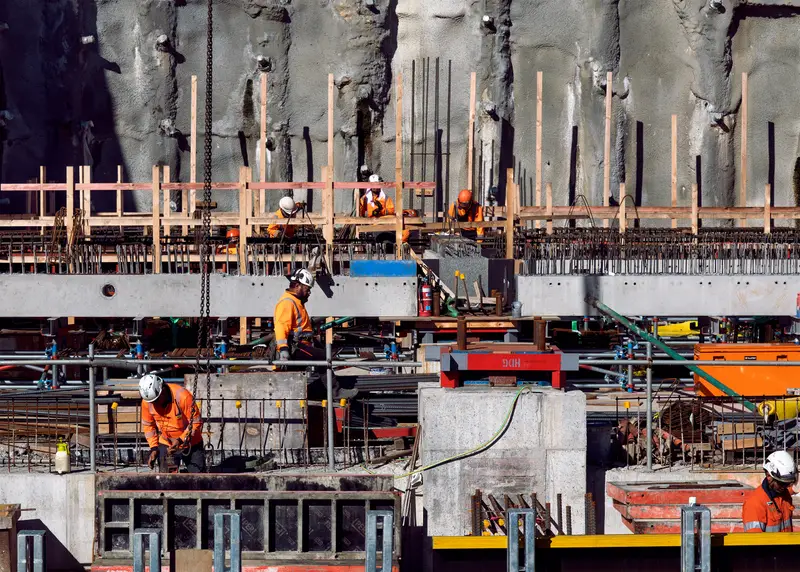BCI Construction Outlook report highlights challenges and opportunities for the sector
Closing out 2024, BCI Central’s annual Construction Outlook Report offers a comprehensive analysis of Aotearoa New Zealand’s construction sector, highlighting key challenges while pointing to opportunities for improvement.

Drawing on BCI data and interviews with experts from across the development, architecture and building industries, the report reflects on the sector’s current state amid high inflation and construction costs, alongside government responses from Hon Chris Penk, Minister for Building and Construction.
The report cites trends in activity over a two-year period, and while the industry is acknowledged by MBIE as New Zealand’s fifth largest, accounting for 6.3% of GDP, key areas are identified as requiring attention from the government. It notes ‘clearer policies and incentives are needed to advance progress’. Challenges raised:
- Reduced public investment: The report highlights the impact of halted public projects, noting ‘lack of government spending is a significant risk factor for the construction sector’. 9% of stakeholders rated initiatives taken by the government to stimulate and support construction activity as ‘strong’, reduced to 2% for local government.
- Decreasing opportunity and increasing competition: As one economic indicator, the report notes a 57% drop in the value of projects entering the consenting pipeline. Further, an influx of Australian developers, architecture firms and builders are crowding into a saturated market, intensifying competition for an already sluggish pipeline of new projects.
- Market uncertainty: While abandoned projects are declining, deferrals are still on the rise, although this appears to be changing in the commercial sector.
- Survival over sustainability: 51% of developers are considering down-sizing, and 56% see contractor insolvency as a major risk. In the current economic climate, the industry’s ability to deliver sustainable outcomes has become increasingly challenged.
- Labour shortages: Skilled worker shortages continue to challenge the industry, which could hinder recovery when economic activity increases.
What’s needed? Vision, visibility and consistency
The report notes ‘industry leaders (are) doubting 2025 will bring relief amid job availability and economic stability concerns.’ Addressing economic conditions will require more than sustainable and innovative solutions driven by business.
Throughout, the report reflects that the market is consistently calling for three things from all governments: clarity of vision, pipeline visibility, and consistency in policy to address uncertainty and stagnation. It notes stability will better enable the industry to focus on sustainable growth.
How can industry respond?
Among a panel of reputable industry voices, Jasmax Principal and Commercial Sector Lead Nick Moyes contributed insights: “Following a decade of growth, New Zealand is facing economic headwinds, and the market here has become increasingly cost-driven. Jasmax is fortunate to hold long-established relationships with clients, but we are not complacent…We aim to understand our client’s challenges and respond quickly to market conditions, delivering value by collaborating with the supply chain to reduce costs and increase efficiency.”
Streamlining consultancy services
“Jasmax is working closely with clients to explore innovative solutions for streamlining design and consultancy services to deliver exceptional value. This is leading to creative new approaches to procurement, design and delivery,” adds CEO Matthew Glubb.
Affordable, sustainable solutions
Jasmax is actively seeking ways to make sustainable solutions more affordable and repeatable, exploring prefabrication, carbon reporting and building reuse.
Moyes acknowledges “our smaller population presents a handicap for businesses when scaling up in New Zealand. Although there have been attempts at prefabrication at scale, they haven’t yet gained sufficient traction here. Nonetheless, there are bright spots in the market, particularly with innovative manufacturing and contracting teams that consistently deliver quality products and projects.”
As larger companies are increasingly required to report on the carbon emissions associated with assets, the value of upgrading existing buildings over constructing new ones is being recognised in the investment markets.
Investing in skills and technology
Jasmax prioritises staff development and technology to improve workflow efficiency and therefore value.
“Upskilling our staff and providing them with the best tools available has always played a part in our company’s success alongside accelerating training and development. Over the last 12 months, we’ve focused on education programmes to reinforce core strengths. We see maintaining a high level of industry knowledge as vital, as compliance pathways in New Zealand have become increasingly complex to navigate.
An intimate understanding of local contracting capability and compliance requirements are key to delivery excellence in this country. We are optimistic that the efforts we make in the headwinds of today will accelerate opportunities now and into the future,” says Moyes.
The 2024 BCI Construction Outlook Report serves as an indicator of the current challenges the construction industry is facing. It also highlights the opportunities for innovation, collaboration, and policy reform that can help the sector navigate its current crisis and build a more sustainable, resilient future. Download the full report here.